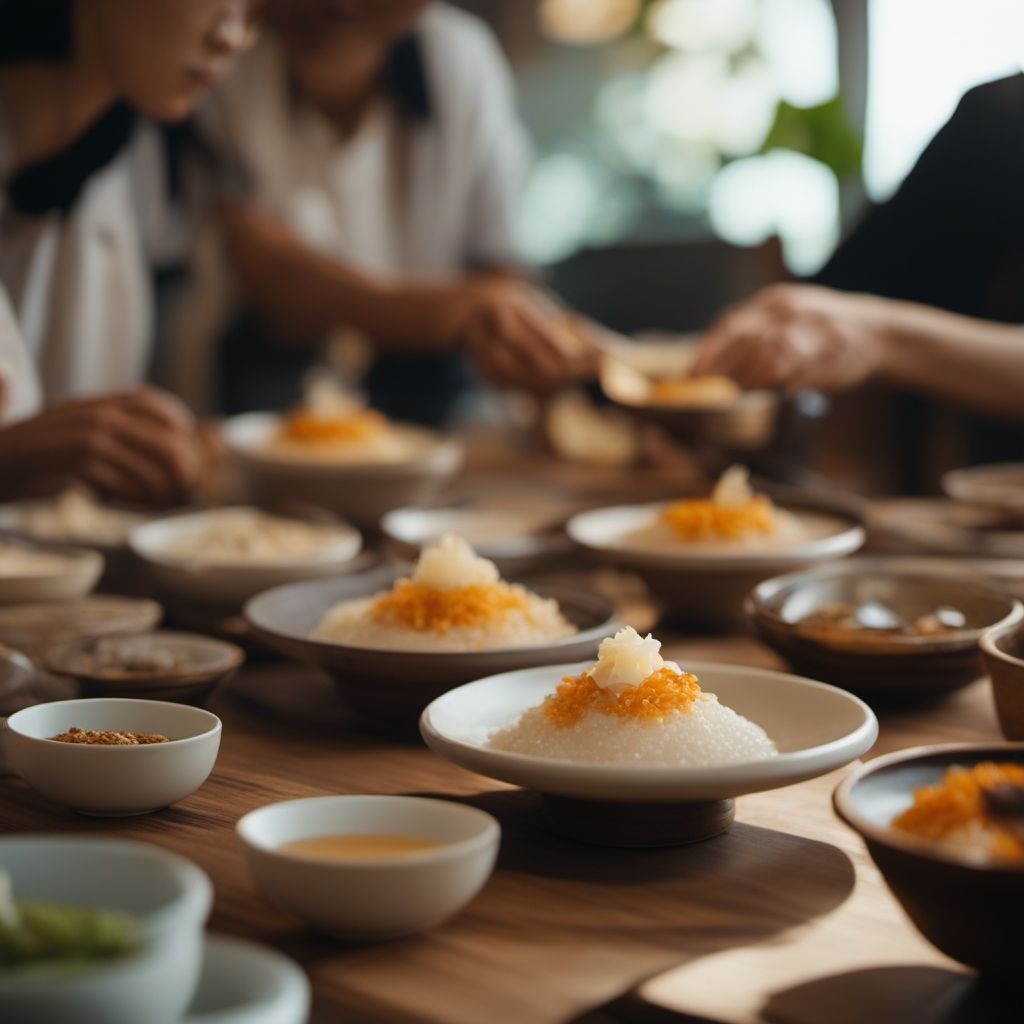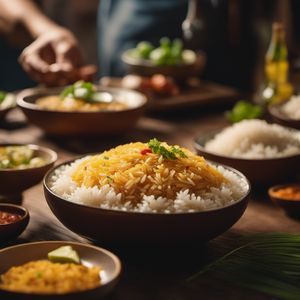
Dish
Tteok
Tteok can be made in a variety of shapes and sizes, including round, flat, and cylindrical. It can also be filled with sweet or savory ingredients, such as red bean paste or meat. Tteok is typically steamed or boiled until it becomes soft and chewy. It can be served plain or with a variety of toppings, such as sesame seeds or honey.
Origins and history
Tteok has been a popular dish in Korea for centuries and is often served during holidays and special occasions. It is also a popular street food in Korea.
Dietary considerations
Tteok is gluten-free and suitable for those with gluten allergies or sensitivities. However, some variations of tteok may contain nuts or other allergens.
Variations
There are many variations of tteok, each with its own unique ingredients and flavors. Some popular variations include songpyeon, which is a crescent-shaped tteok filled with sweet ingredients, and jeolpyeon, which is a colorful tteok made with natural dyes.
Presentation and garnishing
Tteok can be presented in a variety of ways, such as on a plate or in a bamboo steamer. It is often garnished with sesame seeds or honey for added flavor.
Tips & Tricks
To make tteok extra soft and chewy, add a small amount of glutinous rice flour to the rice flour mixture.
Side-dishes
Tteok can be served on its own or with a variety of side dishes, such as fruit or tea. It is also often served with a side of honey or syrup for added sweetness.
Drink pairings
Tteok pairs well with a variety of drinks, including tea, coffee, or fruit juice.
Delicious Tteok recipes
More dishes from this category... Browse all »

Aji nigiri sushi
Japanese cuisine

Akami nigiri sushi
Japanese cuisine

Anago nigiri sushi
Japanese cuisine

Arroz a la plancha
Spanish cuisine

Arroz a la tumbada
Mexican cuisine

Arroz al forn
Spanish cuisine

Arroz al jerez
Spanish cuisine

Arroz al olivar
Spanish cuisine



